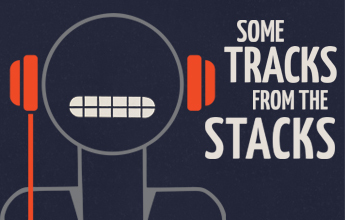Remixing old Edison phonograph records from the Library of Congress with Innovator in Residence Brian Foo
Summer 2020
About
"During my 2020 residency at the Library of Congress, I developed Citizen DJ to invite the public to make hip hop music using free-to-use sounds in the Library’s vast collections. One of my deliverables was to create an album of my own music using the tools and resources provided by Citizen DJ, which you can listen to below.
Each song remixes a single item in the Library’s collection called Inventing Entertainment-The Early Motion Pictures and Sound Recordings of the Edison Companies. This collection contains early sound recordings on Edison Diamond Discs published between 1912 and 1929. For each new song on the left, you can listen to the source recording that it references on the right. Credits and creative process provided below the tracks.
All the Edison recordings that are referenced are in the public domain. Since I produced the new tracks as a contractor for the federal government, these tracks are also in the public domain, meaning they free to use and reuse without restriction. You can copy, modify, and distribute these works all without asking permission. Attribution (Brian Foo and the Library of Congress) is appreciated but not required."
Download the album External
Download the referenced recordings External
Credits
- Introduction and whirl contains samples of Introduction and tarentelle by Pablo de Sarasate (1844-1908), Mischa Violin (performer), and Josef Adler (performer). Excerpts:2:31 3:28 4:03
- Scholars increase the levels of peace contains samples of Omar Rabbi Elozor by Meyer Kanewsky (performer). Excerpts:0:01 2:03 2:24
- Secular holiday contains samples of Allah's holiday by Rudolf Friml (1879-1972), Eugene Jaudas (performer), and Jaudas' Society Orchestra (performer). Excerpts:0:01 1:32 2:03
- Old pal... WHY DON'T YOU ANSWER ME?! contains samples of Old pal (Why don't you answer me?) by M. K. Jerome (1893-), Herbert Soman (performer), and Daniel Lieberield (performer). Excerpts:0:42 0:52 1:33
- Midwestern groove contains samples of Indiana by James Frederick Hanley (1892-1942), Ballard MacDonald, and Homestead Trio (performer). Excerpts:0:06 0:50 2:37
- Hold up contains samples of Onward, Christian soldiers! by Arthur Sullivan (1842-1900). Excerpts:0:01 1:27 3:03
- Bubbles 4 life contains samples of I'm forever blowing bubbles by Jaan Kenbrovin, John William Kellette , Helen Clark (performer), and George Wilton Ballard (performer). Excerpts:0:01 3:10 3:22
- Southern vibe mixtape contains samples of Medley of Southern airs by Fred J Bacon. Excerpts:0:36 1:16 1:45
Why these Edison recordings?
"I decided to build this album from a single collection rather than multiple ones because I wanted to consistently evoke the atmosphere and aesthetics of a specific era. I thought it was meaningful to reference this collection of Edison recordings because it has been about a century since their creation. In the case of the last track, it is exactly 100 years since publication. If hip hop is about transforming something old into something new and fresh, I wanted to take that to the extreme by remixing some of the oldest sound recordings at the Library."
What was your creative process?
"Using the exploration and remixing tools of Citizen DJ, I listened for sounds and patterns that stood out to me. Once I identified those audio clips and patterns, I brought those clips into my own music production process (using Python and FL Studio) for further sequencing, tweaking, and mixing.
I decided to keep the instrumentation limited to the original recordings and drums with minimal effects or manipulation. For the most part, the original recordings were not cleaned, stretched, or run through filters; they were just chopped and looped. The goal was to let the original recordings drive the dominant sonic color and textures of the new songs. The drums function simply to reinforce and amplify the original samples.
I tried my best to balance my two opposing creative goals:(1) preserve the overall aesthetics of the referenced materials and (2) transform the old material into something new. Each track sits in a different part of that spectrum. For example, track 2 leans toward goal (1) and track 4 leans toward goal (2). My hope is that listening to the new tracks will encourage you to listen to the referenced recordings new ways (and vice versa)."


